The Los Angeles County Supervisors have just received a smart, step-by-step plan describing how the county can eliminate pepper spray from its youth facilities in 12 months—-as the board voted to do in February.
Getting enough consensus from various interested factions to create the plan to remove the skin-blistering spray that youth advocates label torture, and some staff claim is a necessary tool was not an easy endeavor.
Yet the final product was remarkably inclusive.
But, now that it’s here will the newly created plan be put to use?
This is a question that has yet to be answered.
Here’s the deal:
On March 16 of this year, at the request of the board of supervisors, the ad hoc oversight body known as the Probation Reform and Implementation Team—or PRIT—held a four-hour hearing in Carson, CA, where community members, youth advocates, probation staff, and various county officials and other experts, came together to exchange information about what it would take to phase out pepper spray from the county’s three juvenile halls and two of its youth camps.
Among those who attended were youth who had, in their pasts, been locked-up and pepper sprayed, who explained how tortuous the experience could be—especially when inflicted on children.
The discussion also focused on how the LA phase-out could be done safely for all concerned.
The day’s discourse was loaded with emotion, particularly when it came to probation staff members, some of whom felt the painful spray ought to be kept, and youth advocates. At times, the two groups seemed to be shouting—even if not literally—across an unbreachable barrier. Yet, despite the disagreements, most of those who showed up stayed for the entire four-hour duration.
By the end, there was was a distinct softening of the us-versus-them mentality that had, at times been a feature of many past PRIT meetings.
Interestingly, it was former gang member, Miguel Lugo, who is now working at Homeboy Industries, who most dramatically calmed the roiling waters at the hearing.
“I was in a gang, and I was a gang leader,” Lugo said, staring meaningfully around the room of 100 or so attendees. And what I heard is gang talk here today. We need to help our staff. We need to care for staff. And we also need to care for the kids.”
Prior to coming to Homeboy, Lugo was in and out of lock-ups of one kind or another, and on and off of probation, since he was nine-years-old. Thus he knows from experience, he said to those gathered, to acknowledge the “trauma that happens in probation,” and the traumatic experiences that the kids in the facilities are already carrying when they arrive.
“Today, I have therapy, I have a counselor, I have help.” But he didn’t always. And that kind of healing makes a big difference, and needs to be a priority for the youth in these facilities, he said.
But caring for the needs of the kids, couldn’t exclude caring at the same time for the needs of the staff.
Yet, the pepper spray issue still had to be addressed, said PRIT member, Alex Sanchez, who is head of Homies Unidos, an organization he co-founded in 1996, which works with at-risk and disadvantaged youth and their families, particularly kids from Central America. Now an internationally-known expert on gang culture, and violence prevention, Sanchez came to the U.S. from El Salvador at age seven and joined a gang in his youth, namely MS-13, which soon led to his own incarceration experiences.
“I visited Challenger recently,” Sanchez said, referring to one of the two youth camps that still uses pepper spray. When he was there, he said, many of the staff he met confided that “this is the first tool that we use to diffuse a situation.”
Obviously, that’s a problem.
The report that resulted from the fractious but ultimately productive meeting—Safety and Humane Treatment and the Phased Elimination of Pepper Spray in LA County Juvenile Justice Facilities—was delivered to the members of the Los Angeles County Board of Supervisors, and to Probation Chief Terri McDonald, last week.
On Monday morning, the report became a public document, and members of the board of supervisors issued statements expressing enthusiasm about the plan that the report has laid out. (We’ll get to the details of the plan in a minute.)
“It is high time we come to grips with the problems plaguing the juvenile halls and probation camps,” including pepper spray, said Supervisor Mark Ridley-Thomas. “The PRIT has given us a roadmap with clear and actionable steps on how to do this, crafted with input from a range of stakeholders. There is no excuse for not moving forward now, and with expediency.”
Supervisor Sheila Kuehl also liked the report with its step-by-step roadmap.
“I applaud the Probation Reform Implementation Team for synthesizing the insights of our community stakeholders on how to eliminate pepper spray while preserving safety in our facilities,” she said.
Searching for consensus
The PRIT, for those still unfamiliar, is a five-member panel of experts, that came into being after a historic vote by the board to create an independent oversight commission to act as a watchdog for the nation’s largest probation department. According to the motion, which was co-authored by Ridley-Thomas and Supervisor Hilda Solis, the PRIT was given the task of creating an initial work plan for reforming the probation department, as well as hammering out a design for how the newly proposed Probation Oversight Commission—or POC—ought to function, and what powers it ought to have.
But, since its inception, the PRIT has become a sort of temporary oversight body itself, until the actual POC can be finally birthed.
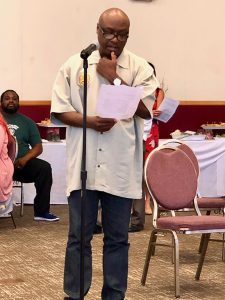
Stacy Ford, special representative from AFSCME Local 685, the union for probation’s rank and file/WLA
The PRIT’s pepper spray report comes at a time when many of those who work in the county’s youth facilities—particularly LA County’s three juvenile halls, one of which is in the process of being shut down—have reported that they feel genuinely unsafe at work, that the kids they oversee are out of control, that they don’t have the training or support they need, and that many of their co-workers are calling in sick as a result. (This, in turn, means that those who come to work often must work double shifts, leading to chronic exhaustion.)
In other words, things are not going well at all in many of the youth facilities.
Thus, staff members say they are extremely worried about the removal of what they consider to be a much-needed tool. If pepper spray is yanked, several staff members said at the March meeting, there will be severe injuries, and maybe deaths, a point that was emphasized by Stacy Ford, special representative from AFSCME Local 685, the union for probation’s rank and file, and also one of the expert speakers at the March hearing.
To make clear the danger staff perceive, he brought a display of alarming photos that showed shanks made by kids, and officers injured on duty by youth.
“But not all staff use pepper spray,” Ford added. Many staff members have the skill to form genuine relational bonds with the kids they oversee.
“We’re not opposed to change,” agreed another department member, Eddie Chism, who is a Deputy Probation Officer II and Local 685 Camps Vice President. “But it seems like we’ve been villainized for the job we’re doing.”
Chism noted that in the past he has worked in “the compound,” the area of Sylmar-located Barry J. Nidorf Juvenile Hall, which is reserved for the kids charged with the most serious offenses.
“I treated them like they were my own sons,” he said of the compound kids. But too often, the staff is being blamed “for what is not within our control.”
On April 4, a few weeks after the March meeting, the difficulty in reaching consensus on the topic was further intensified when the LA District Attorney’s Office announced that they were charging six department officers for abusively using pepper spray on five different teenage girls during six separate incidents at Downey-located Los Padrinos Juvenile Hall, to the point that the spraying was severe enough to be classified as a crime.
WitnessLA talked to a department member who’d seen at least one of the videos that prompted the charges. He described how the video he saw depicted the disturbingly aggressive spraying of a young female probationer, then how, after spraying, the water was deliberately turned off in the girl’s room, so she had no way to get the burning spray off of herself, so began desperately splashing her body with liquid from the tiny room’s toilet.
It was really terrible, he said, visibly wincing at the memory. Terrible.
At the moment, California is one of only 15 states that permit the use of pepper spray in juvenile facilities and only one of five states that allow it to be carried by probation officers in youth facilities.
The news that aerosolized Oleoresin Capsicum, commonly called OC-spray or pepper spray, was being used abusively by certain staff in the county’s youth facilities, first came to public attention on February 5, of this year when the Office of the Inspector General (OIG) delivered a 28-page report to the LA County Board Supervisors. The report painted a distressing picture of the use of the spray on the youth who are housed in LA County’s three juvenile halls and two of its youth probation camps.
On February 19, 2019, the OIG’s report led to a unanimous vote by the board to phase out the use of pepper spray on the county’s kids altogether.
And yet, despite the passage of the motion (co-authored by Kuehl and Ridley-Thomas), getting to phase out safely, with everyone involved agreeing to the terms of the phase out, seemed to be anything but simple.
Traumatized youth and traumatized staff
To help breach the gap, the same day that the board of supes voted to get rid of OC spray, the board passed a second motion—sponsored by Supervisors Ridley-Thomas and Janice Hahn—which instructed PRIT to convene what became the March 16, special hearing so that community members could weigh in on the contentious pepper spray issue.
After the hearing, the PRIT panel, and their expert advisors were to take what they had heard and deliver a list of recommendations for the pepper spray phase out—along with some additional recommendations about what was needed to turn the county’s youth facilities into safe and healing environments.
The good news is that the resulting 19-page report turns out to be unusually inclusive of both the interests of the youth, the youth advocates, and the department’s staff members, who have increasingly expressed to anyone who will listen to their fears that their very real concerns and needs are going disastrously unheard.
In coordination with the supervisors’ wishes, the PRIT report sets out a 12-month timeline for the phase out, with recommendations for each three month period.
For instance, in months 1-3, the report suggests that everyone must do what is necessary to get the department’s house in order when it comes to its youth facilities. Probation needs to take a hard look at the understaffing situation, including the pattern of staff staying home for injury or illness, particularly in the juvenile halls, with too few supervisors on duty at any given time.
Meanwhile, according the report, the department—with the aid of consultants who are expert in pepper spray phase-out—should conduct a survey of staff and youth to get feedback on their needs, concerns, and opinions about the removal of pepper spray, and to determine exactly what training is needed to make the phase-out practical.
“Prior to elimination,” the report states, “there must be trainings implemented to equip” those staff who care directly for youth., This training should include, “non-violent crisis intervention, cultural competency, youth trauma, and staff stress reduction practices.”
Otherwise, write the report’s authors, “banning pepper spray use without first providing custody/care staff more skills training and alternative tools,” could lead to safety/security risks for all concerned.
Actual phase out
During months 3-9, according to the report, the aforementioned training should take place, and the phase-out should actually begin.
During those months, “line-staff are not allowed to carry OC” spray. Only supervisors are authorized to dispense the spray under limited circumstances, namely, during a “physical altercation..between two or more youth who cannot be controlled, and repeated clear verbal warnings have been given.” Or when a youth is “physically assaulting a staff and the situation cannot be controlled with a physical intervention.”
Interestingly, the PRIT report also addressed the psychological perspective that the authors felt was necessary for a successful phase out.
“While implementing these recommendations, all leadership throughout probation, from administration to facilities need to display strong and unwavering confidence in reducing, restricting and eliminating the use of OC spray in a safe and timely manner.”
Furthermore, the authors wrote, neither the probation department nor anyone else should “place blame on anyone for the changes taking place, but embrace the changes with the belief they can be implemented successfully; that they are the correct way to work with youth, and that the changes will make the facilities safer.”
In months 9-12, the pepper spray is to be kept in a “lock box” in the juvenile halls for use under ” limited circumstances (with the camps having stopped using OC spray totally by this time).
At month 12, OC spray is to vanish altogether.
“The thing that to me that is significant,” Saul Sarabia, the PRIT’s chairperson told WitnessLA, is that the report “goes out of its way to recognize the needs, not just of the youth, but of the staff, who are also experiencing vicarious trauma.”
Probation Chief Teri McDonald is the person to whom the PRIT report was actually directed, and who has been asked to come up with the department’s own plan for the official phase out, using input from the PRIT report.
“We appreciate the work the PRIT has undertaken to develop these recommendations and will take them under advisement as we continue to develop a comprehensive strategy to safely eliminate the use of OC spray in our residential facilities,” McDonald said.
“Our goal is to continue to work with our staff and partners to reduce the circumstances that contribute to the need for physical interventions. Additional training to build upon staffs skills working with high need youth and increasing rehabilitative services are among the actions we plan to take to ensure a safe environment.”
In other words, the PRIT report may be a step forward. But there are many more steps yet to come.
And the timetable for those steps is still uncertain.

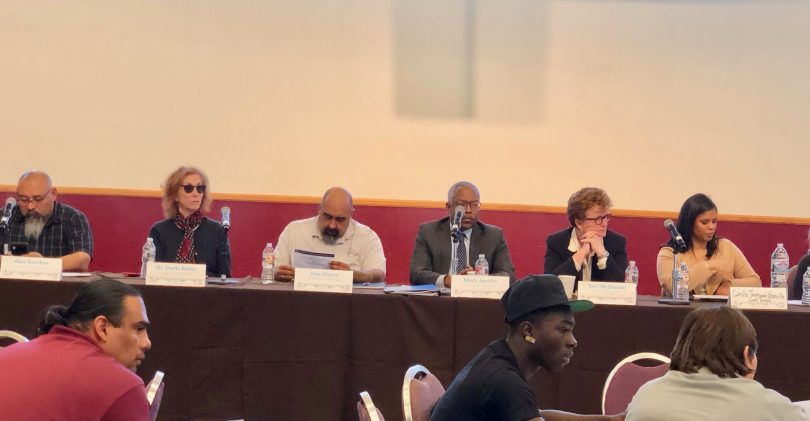
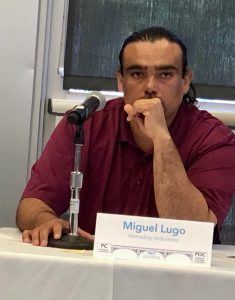
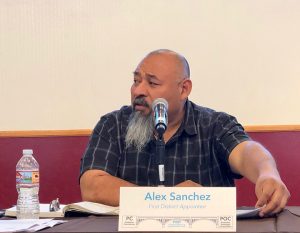
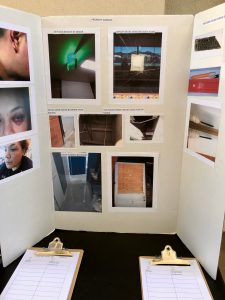
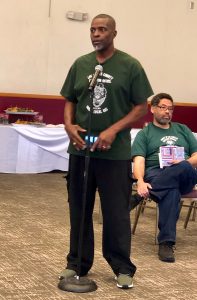
Teri McDonald??? What a worthless manger!!! Oh PLAAASSSEEE Sheriff AV was right to rid the swamp of her!!
You do realize that McDonald has been with Probation long since the Sheriff was elected, do you not?
She was gone before AV got there.
Wow, just wow. “Former gang members” are your subject matter experts? “Homies Unidos” (gang members united)? These are the heroes of the left.
And BTW, pepper spray is edible. Yes, you can put it on your burrito and eat it. It’s being made out to be the worst fight-stopper ever conceived, but it’s actually one of the best. Some crooks, juvies and adults, just won’t stop until they’re forced to stop. Does it burn? Yup. Don’t fight or be aggressive toward authorities. Pretty simple.
The main concern they should be focused on is burning the staff out at Barry j. We have numerous staff doing 16-24 hour shifts everyday. How are the officers supposed to perform their jobs to their fullest potential when they are always tired.
EDITOR’S NOTE:
FYI: In December 2015, then LASD Chief Jim McDonnell announced the retirement of the Assistant Chief Terri McDonald. She was replaced by Kelly Harrington in March 2016. McDonald was a finalist for the position of Probation Chief in September 2016. She was chosen to lead probation in early November 2016, and began work on January 1, 2017.
“DSO at Barry J,” we agree. We’ll be writing more about the impossible and unfair situation the DSOs are coping with at Barry J. If you’d be willing to talk to me on background, please contact me at celeste@witnessla. In any case, thanks for the comment. A constant state of exhaustion is no way to work.
Happy Tuesday.
C.
Who cares? She’s gone and yes I knew she left. What BS that she has a job anywhere. But, I could have worded my response better. Thank You C
Dose of Reality, who better to be an expert on gangs than former gang members. Do you want to bring out that expert from the LAPD, Frank Flores, who was used in the case against Mr. Sanchez and was ultimately removed for hearing voices and stories that were not on the recordings from the wires. Or how about former Sheriff Richard Valemar. Would you rather see him. I read some of his work and it sounds like a cop who got his Ph.D on gangs from the patrol car and became a pseudo-expert based on pushing around a few kids with baggy pants.
Ef we’re tired of ex-gang members being the only role model for these kids. Plus there are a lot of kids in the halls who are not mentally ill or gang members. How about we get positive people to help show them ways to get out with being in a gang.
How about therapy for the kids and probation officers? Finding a middle ground where we can help both sides. You don’t have to be the left or the right to agree. Change is coming. Yes former gang members have been through the trauma so what better expert than this. I hope none of your kids end up on this situation
Your comment’s logic is really flawed. You mine as well said we should just cut off a youth’s finger when they fight because they don’t need them all. OC spray is not HUMANE, especially on youth. You are right about one thing that fighting and aggressiveness towards staff is wrong. But didn’t your mom ever tell you, “Two wrings don’t make a right!” As adults we need to set examples to the youth under supervision, not be the ones who abuse them because they don’t behave.
Big Red strikes again. She will do to probation what she did to LASD. Good luck with that.
Without a physical deterrent (pepper spray, taser or getting physical) what is going to stop these “kids” from attaching one another or the staff.
She is a career “do gooder” who doesn’t have true safety of the inmates in mind. ask any of the old school inmates how safe they felt during here time at LASD. they will tell you the youngsters were out of control and were taxing everyone. It will be the same at Juvi.